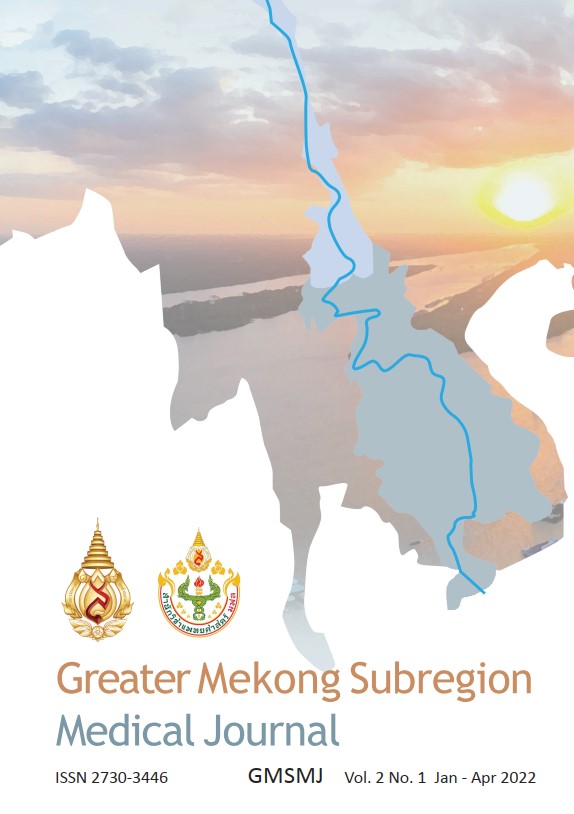In Silico Prediction of the Action of Ivermectin-like Compounds on Binding Sites of the SARS-CoV-2 Spike Protein and Receptor-binding Domain of ACE2
Keywords:
Ivermectin, in silico analysis, COVID-19, SARS-CoV-2 Spike protein, Angiotensin-converting enzyme 2Abstract
Background: Ivermectin (IVM), a macrocyclic lactone anthelmintic drug, is a promising lead compound that may disrupt the binding interface of the SARS-CoV-2 spike protein with the protein-binding domain of angiotensin-converting enzyme 2 (ACE2), and so could present an opportunity for further drug development of anti-COVID-19 medication.
Objective: This study aimed to determine and predict the most effective IVM-based analogs against the SARS-CoV-2 spike protein and human angiotensin-converting enzyme 2 by using computational analysis.
Method: This study performed a rational in silico study to screen ivermectin-like compounds with a similarity score less than 0.70 and then screened these for acceptable pharmacokinetic properties, to further examine molecular docking analysis of SARS-CoV-2 spike protein and protein-binding domain of angiotensin-converting enzyme 2.
Result: The results showed that compound 14, with a similar score of 0.722, exerted the most binding affinity with both targets, with a binding energy of -8.32 and -7.98 kcal/mol to the SARS-CoV-2 spike protein and the protein-binding domain of angiotensin-converting enzyme 2 respectively, showing better values than that of ivermectin.
Conclusion: Our study confirms the possibility that the ivermectin-like compound 14 may be a most promising candidate drug, acting on the SARS-CoV-2 spike protein and angiotensin-converting enzyme 2, so should be studied further as part of a drug discovery and development process.
References
WHO. Therapeutics and COVID-19: living guideline [Internet]. Who.int. World Health Organization; 2021 [cited 2021 Jul 8]. Available from: https://www.who.int/publications/i/item/WHO-2019-nCoV-therapeutics-2021.1
WHO Coronavirus (COVID-19) Dashboard [Internet]. Who.int. World Health Organization; 2021 [cited 2021 Aug 13]. Available from: https://covid19.who.int/
Caly L, Druce JD, Catton MG, Jans DA, Wagstaff KM. The FDA-approved drug ivermectin inhibits the replication of SARS-CoV-2 in vitro. Antiviral Res. 2020; 178 (104787):104787.
Bray M, Rayner C, Noël F, Jans D, Wagstaff K. Ivermectin and COVID-19: A report in Antiviral Research, widespread interest, an FDA warning, two letters to the editor and the authors’ responses. Antiviral Res. 2020; 178 (104805): 104805.
Teare JA, Bush M. Toxicity and efficacy of ivermectin in chelonians. J Am Vet Med Assoc. 1983; 183 (11): 1195-7.
Henriquez-Camacho C, Gotuzzo E, Echevarria J, White AC Jr, Terashima A, Samalvides F, et al. Ivermectin versus albendazole or thiabendazole for Strongyloides stercoralis infection. Cochrane Database Syst Rev. 2016; (1): CD007745.
Martin RJ, Robertson AP, Choudhary S. Ivermectin: An anthelmintic, an insecticide, and much more. Trends Parasitol. 2021; 37 (1): 48-64.
Arévalo AP, Pagotto R, Pórfido JL, Daghero H, Segovia M, Yamasaki K, et al. Ivermectin reduces in vivo coronavirus infection in a mouse experimental model. Sci Rep. 2021; 11 (1): 7132.
Siemieniuk RA, Bartoszko JJ, Ge L, Zeraatkar D, Izcovich A, Kum E, et al. Drug treatments for covid-19: living systematic review and network metaanalysis. BMJ. 2020; 370: m2980.
Rajter JC, Sherman MS, Fatteh N, Vogel F, Sacks J, Rajter J-J. Use of ivermectin is associated with lower mortality in hospitalized patients with Coronavirus disease 2019: The ivermectin in COVID nineteen study. Chest. 2021; 159 (1): 85-92.
Heidary F, Gharebaghi R. Ivermectin: a systematic review from antiviral effects to COVID-19 complementary regimen. J Antibiot (Tokyo). 2020; 73(9): 593-602.
Zaidi AK, Dehgani-Mobaraki P. The mechanisms of action of Ivermectin against SARS-CoV-2: An evidencebased clinical review article. J Antibiot (Tokyo) [Internet]. 2021; Available from: https://pubmed.ncbi.nlm.nih.gov/34127807/
Lehrer S, Rheinstein PH. Ivermectin docks to the SARS-CoV-2 spike receptorbinding domain attached to ACE2. In Vivo. 2020; 34 (5): 3023-6.
Eweas AF, Alhossary AA, AbdelMoneim AS. Molecular docking reveals ivermectin and remdesivir as potential repurposed drugs against SARS-CoV-2. Front Microbiol. 2020; 11: 592908.
Zoete V, Daina A, Bovigny C, Michielin O. SwissSimilarity: A web tool for low to ultra-high throughput ligand-based virtual screening. J Chem Inf Model. 2016; 56 (8): 1399-404.
Daina A, Michielin O, Zoete V. Swiss ADME: a free web tool to evaluate pharmacokinetics, drug-likeness and medicinal chemistry friendliness of small molecules. Sci Rep. 2017; 7 (1): 42717.
Lipinski CA. Lead- and drug-like compounds: the rule-of-five revolution. Drug Discov Today Technol. 2004;1 (4): 337-41.
Lan J, Ge J, Yu J, Shan S, Zhou H, Fan S, et al. Structure of the SARS-CoV-2 spike receptor-binding domain bound to the ACE2 receptor. Nature. 2020; 581 (7807): 215-20.
Morris GM, Huey R, Lindstrom W, Sanner MF, Belew RK, Goodsell DS, et al. AutoDock4 and AutoDockTools4: Automated docking with selective receptor flexibility. J Comput Chem. 2009; 30 (16): 2785-91.
Pettersen EF, Goddard TD, Huang CC, Couch GS, Greenblatt DM, Meng EC, et al. UCSF Chimera-a visualization system for exploratory research and analysis. J Comput Chem. 2004; 25 (13): 1605-12.
Chandler RE. Serious neurological adverse events after ivermectin-do they occur beyond the indication of onchocerciasis? Am J Trop Med Hyg. 2018; 98 (2): 382-8.






